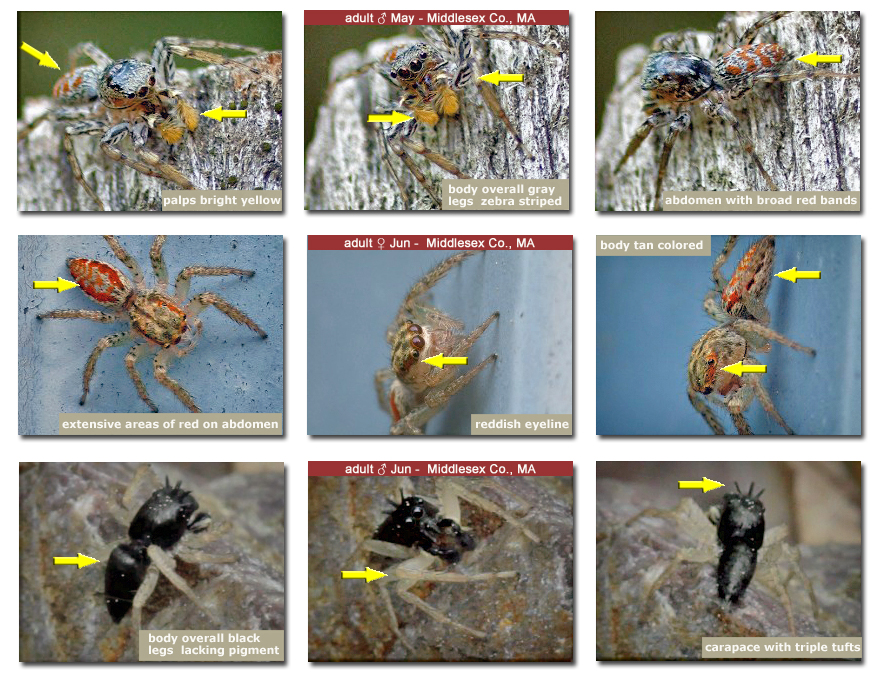Maevia inclemens (Walckenaer, 1837) – Dimorphic Jumping Spider

Richman, Cutler & Hill 2012
The Dimorphic Jumping Spider takes its common name from the fact that males occur in two distinct forms. Not to be confused with different developmental stages of an individual spider which may have different looks, adult males of this species are either overall back or gray with dark reddish to orange markings. The black or tufted morph/form of Maevia inclemens has three prominant tufts on the crown and colorless or pale yellow legs. In contrast gray morph adult males show flashy, striped legs, bright yellow palps, and red bands on the abdomen; they also lacks the trio of tufts seen on the black morph. While male courtship rituals of the two are significantly different, studies show that females respond to the two styles in a similar way and that ultimately the two male morphs have approximately the same rates of mating success.
Clark 1994
Massachusetts – First State / County Records

- ♦ W. Holden – Attus vittatus – Middlesex (Malden), – Emerton in Burgess, 1875
- ♦ H. W. Britcher Collection – Maevia inclemens – Barnstable (Woods Hole), July, 1901 – Barnes, 1955: 4
- ♦ *BSNH – Maevia vittata – Essex (Beverly), Norfolk (Brookline) – Bryant, 1908: 103
- ♦ T. Murray – M. i. – Plymouth (Plymouth), September, 2006 – BugGuide node 76277
- ♦ Connecticut – M. vittata – Kaston, 1948: 496, 26 records
-
Barnes, Robert D. 1955. North American jumping spiders of the genus Maevia. American Museum Novitates, 1955 No. 1746: 1-13.
- *See Bryant, 1908



